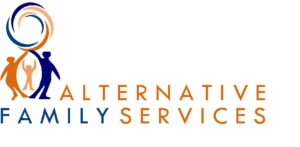What Makes the AFS San Francisco Emergency Placement Program Unique?

AFS partners with the City and County of San Francisco to run their Emergency Placement Program (EPP) that provides 24/7 on-call emergency care to San Francisco County children and teens 18 years old and younger.
AFS partners with the City and County of San Francisco to run their Emergency Placement Program (EPP) that provides 24/7 on-call emergency care to San Francisco County children and teens 18 years old and younger. The EPP provides a temporary home with specially trained resource parents while San Francisco County tries to identify relatives or a longer-term foster home for youth in care.
Resource parents in the EPP receive additional training because they are often the first point of contact for foster youth who are enduring the trauma of being removed from their biological home. The support given by the resource parents in an emergency home provides youth in care with a stable and caring environment that sometimes leads to the kids staying with the emergency family for a longer duration until a permanent solution can be found.
To learn more about the program, we recently spoke with Tamara Reyes, ASW, San Francisco Program Director at Alternative Family Services.
Q. Can you give a quick overview of the SF Emergency Shelter Program?
The Emergency Placement Program started in March 2019 because San Francisco’s receiving centers were closing due to state requirements. Before EPP, youth who needed to be immediately removed from their current situation or homes for safety reasons would go to a central location before a longer-term living arrangement could be ascertained. The Emergency Placement Program allows youth to stay in a caring home instead of an institutional setting.
AFS in collaboration with Trinity Agency created the pilot Emergency Placement Program to help meet San Francisco County’s needs. The program started in March 2019 and operated only at night from 8pm to 8am. EPP expanded to 24/7 operations by summer of 2019. The program started with few homes and extended to the contract needs of ten bedrooms.
In 2020, the contract was reviewed and the needs of San Francisco County was extended to twelve beds. Due to the pandemic, Trinity removed their eligible homes from EPP. Staff at AFS were able to find replacements for those homes and now we currently provide all the homes for EPP youth.
The SF Emergency Program is designed to provide the warmth of a family environment for youth enduring the difficult process of being removed from their home and being placed in foster care. The Emergency Placement Program is meant to be for a short period of time while SF County is looking at multiple options for the youth such as reunification, relative placement, longer-term foster care placement, or STRTP (Short Term Therapeutic Program). Children and youth come also to the program after returning from AWOL or a notice.
Q. What is unique about this program?
The program is unique for many different reasons:
- Staff and Family Availability: EPP families and staff are available 24/7 for the program
- Positive Exposure for Youth: Often children and youth do not want to leave their emergency homes. Families have the opportunity to plant a seed that will bloom in some point of that child’s life.
- Collaborative Approach: AFS staff has a good relationship with SF county staff. Together, the teams work collaboratively to ensure the best placement options for the youth in care.
- Professional Observation: SF County receives more information about the child thanks to the AFS team’s observations in these early moments, which ensure they provide better placement options for the child.
Q. How does the SF Emergency Shelter Program work from start to finish?
First, AFS receives an initial intake call from SF County informing us of a situation. The county often does not have a lot of details about the youth involved, but using what information is available to us (data like age, gender, etc.) we determine the best home for them to go to in the moment. AFS staff will pick up youth from a variety of settings, including homes, hospitals and police stations.
The AFS team is then on a tight timeline to pick up the child, provide them with any supplies (pajamas, toiletries, school supplies, clothes, etc.) and take them to the short-term housing placement. During the week, AFS staff has thirty minutes to do all this (up to two hours on holidays and weekends.) These are very aggressive timelines, so all AFS staff members that do this work live in or near to San Francisco.
Youth entering care are coming out of very stressful situations. They have experienced neglect and sometimes abuse. The AFS team provides the youth with physical, psychological and emotions support. Some youth may not have eaten in a while, so caseworkers will buy them a meal. Recently, two kids placed with us were removed from their home at 5am due to domestic violence. AFS staff had to buy them shoes because they did not have any shoes.
Once the child, siblings or teen is picked up, the AFS team goes through a medical clearance with the client and the agency becomes officially responsible for the youth. Once clients are placed in an EPP home, staff will conduct a more thorough review to learn more about the youth, their situation and their needs. It’s at this point AFS and the county work to find a more suitable long-term housing solution based on the individual or sibling’s needs.
Typically, youth will stay in short-term care for one to four days. Unfortunately, for older youth, their stay can be longer–up to 30 days–as we have difficulty finding foster homes willing to take in teenagers.
As I mentioned before, there are only 12 EPP bedrooms available in San Francisco County. Because of the short-term nature of the program, there is almost always a bedroom available in San Francisco when needed.
Q. What is AFS’s involvement in the SF Emergency Shelter Program? How does AFS work with involved youth, foster parents and biological families?
AFS helped develop the SF Emergency Shelter Program in 2019 and we are now the sole provider working with the city and county to operate the program. This includes finding and training resource parents, placing children, siblings and teens into an emergency home and working with clients to address all their physical, emotional and psychological needs.
For resource parents, fostering with the San Francisco Emergency Placement Program is very different than traditional foster care. In a typical fostering situation, resource parents are given a lot of information about the youth and then decide whether or not they are the right fit for one another. With the SF EPP. families must accept the child or children who are placed in their home. This is something resource parents agree to when they first join the program. Oftentimes, very little is known about the youth entering their care.
For families that work in the EPP, I always recommend they focus first and foremost on getting to know the client’s likes and dislikes. Ultimately, as long as resource parents are caring, respectful and understanding, the placement will go well. The resource parents, with the support of AFS staff are trained and prepared to deal with a wide range of emotions on the part of the affected youth.
Sometimes AFS staff works with biological families if asked by the county. For example, the county may decide that therapeutic visitation is necessary so we’ll coordinate that with the youth and fostering families.
Q. What are some of your needs in San Francisco?
In San Francisco, one of our biggest needs is for Spanish bilingual foster families. We also need more resource parents and donations are a huge help in providing supplies for the kids who are placed in EPP.
Q. If I’m interested in participating in the SF Emergency Shelter Program as a foster parent, how can I get started? What the steps for getting involved?
Give us a call at (800) 300-1022! Our team is standing by, ready to help kickstart the application process with you. People can also apply online to be foster parents at https://www.afs4kids.org/register-to-become-a-foster-parent/.
Q. What are some other ways that San Franciscans can get involved to help foster youth?
If you want to help foster youth but aren’t able to be a foster parent, then there are a few other ways to help. One option is to contribute money to support the work that AFS does.
In addition, the AFS San Francisco office is currently seeking donations for items that the foster youth we work with desperately need, like new backpacks, clothing and gift cards. No child should have to move their things in a trash bag!
For more information and to get in touch with the San Francisco office, head to https://www.afs4kids.org/locations/san-francisco-office/ or call (415) 656-0116.
